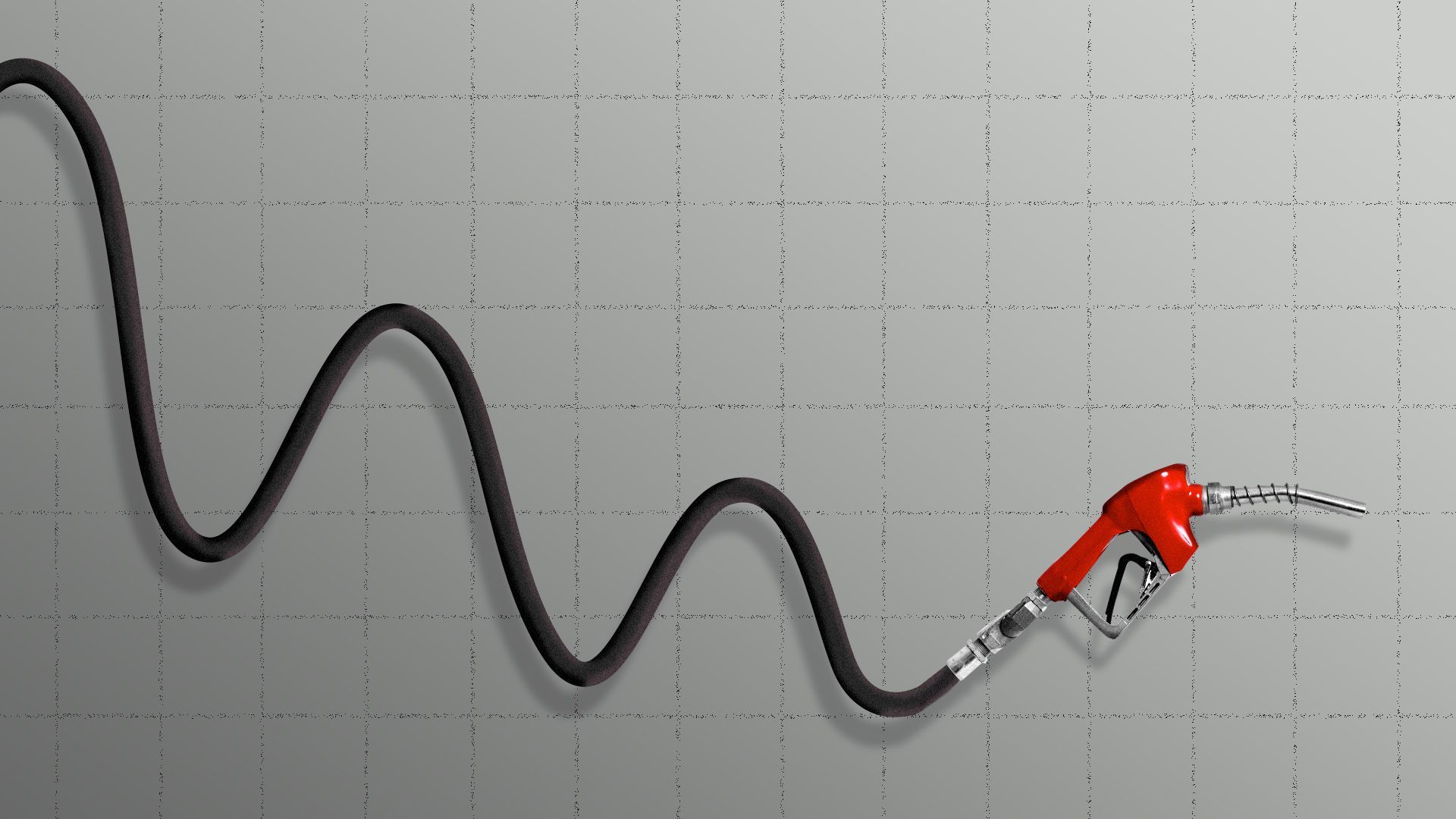
Illustration: Aïda Amer/Axios
The decline of ExxonMobil has been remarkable in its magnitude and unexpectedness.
Why it matters: While all major oil companies are facing troubles, Exxon has fallen the farthest, in large part because it has made the biggest bets on oil and gas — and the smallest bets on renewable energy.
- While rival BP has recently promised to get to zero net emissions by 2050, Exxon has been doubling down on fossil fuels with moves like a spectacularly ill-timed $41 billion acquisition of XTO energy in 2009 and its major expansion in the Permian Basin in 2017.
Driving the news: Exxon reported a loss of $680 million in the third quarter of this year, bringing its losses for 2020 as a whole up to $2.37 billion. (In 2008, by contrast, it made a profit of $46 billion.)
- The company also announced it would shed up to 15% of its workforce over the next two years, including roughly 1,900 U.S. layoffs, mostly at its Houston HQ.
- By the numbers: Exxon and Mobil combined had 390,000 employees in 1980. By 2017, that number had shrunk to less than 70,000.
Losses and layoffs notwithstanding, Exxon is still spending roughly $15 billion on sending a $3.48-per-share dividend to shareholders this year.
- Few if any analysts believe such a payout is sustainable. “We have doubts about the sanctity of the dividend longer-term,” Edward Jones analyst Jennifer Rowland told Reuters.
Flashback: The oil giant was the largest company in the world, measured by market value, as recently as 2013.
- A 700-page corporate biography by Columbia University journalism dean Steve Coll was entitled “Private Empire” and compared the company’s power and reach to that of the United States itself.
- When CEO Rex Tillerson became U.S. Secretary of State in 2017, it was not obvious that he was gaining power or influence.
…click on the above link to read the rest of the article…